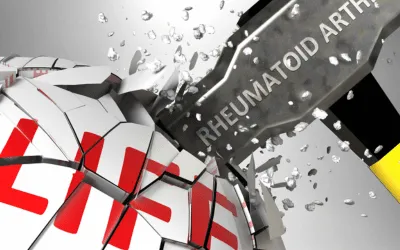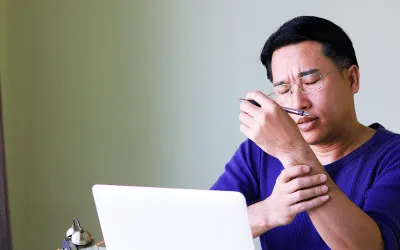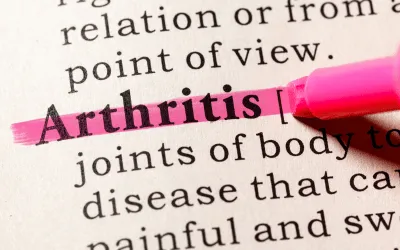About Arthritis
As the nation’s #1 cause of disability, arthritis affects nearly 60 million adults and 300,000 children. Over 100 types of arthritis and related conditions damage the joints and often other organs.
How can we assist you?
Helpful Tools for You

Getting to Know the Spondyloarthritis Group: A Friendly Introduction
Spondyloarthritis (SpA) represents a group of inflammatory rheumatic conditions with some shared characteristics:
Spinal and pelvic joint inflammation causes pain and stiffness.
Enthesitis: inflammation where tendons or ligaments join bones. If you've ever had Achilles tendonitis, you've experienced enthesitis.
The HLA-B27 gene is linked to SpA. However, possessing this gene doesn't guarantee the onset of any SpA-related conditions. In fact, 98% of carriers remain symptom-free. Interestingly, while people of African descent rarely carry this gene, they can still develop SpA.
The SpA Spectrum
The most prevalent type, axial spondyloarthritis (axSpA), encompasses both ankylosing spondylitis (AS) and nonradiographic axial spondyloarthritis (nr-axSpA). Both primarily affect the spine and pelvic joints. AS also termed radiographic axSpA, can cause visible bone damage on X-rays, potentially reducing spinal mobility. Nr-axSpA doesn't exhibit X-ray visible damage and was once thought to be an early AS stage. However, they're now viewed as points on a spectrum rather than distinct stages of one disease.
Other SpA variants include:
Psoriatic arthritis (PsA)
Reactive arthritis, often infection-induced
Enteropathic arthritis, linked to conditions like Crohn’s disease and ulcerative colitis
Key Symptoms
The main symptoms of AS and nr-axSpA include low back pain. Identifying SpA can be challenging due to the vast potential causes of back pain. However, indications include prolonged pain and stiffness, improvement with movement, and heightened morning stiffness.
Who's At Risk?
Though once believed that AS affected men more, it's now recognized that women were underdiagnosed. New findings suggest both genders are equally at risk.
What Triggers It?
The exact cause of SpA remains elusive. While the HLA-B27 gene is common in those with axSpA, it doesn't solely cause arthritis. Several potential triggers are being studied, including back mechanical stress and gut microbe imbalances.
Diagnosis and Treatment
Diagnosis can be tricky due to dated criteria and overlapping symptoms. However, experienced doctors familiar with SpA manifestations are crucial. Treatment primarily includes nonsteroidal anti-inflammatories (NSAIDs). If NSAIDs don't provide relief, biologic medications, like tumor necrosis factor (TNF) blockers, may be considered, although they're expensive and carry potential side effects. Physical therapy and exercises are essential, especially swimming, to maintain spinal health and mobility.
Dr. John Flynn, an expert at Johns Hopkins Medicine, highly recommends exercise for everyone with SpA, emphasizing its potential to decelerate disease progression.
Effects of Arthritis

Cause of Disability
In the United States, 23% of all adults, or more than 54 million people, have arthritis. It is a leading cause of work disability, with annual costs for medical care and lost earnings of $303.5 billion.

Workforce Effects
Sixty percent of US adults with arthritis are of working age (18 to 64 years). Arthritis can limit the type of work they are able to do or keep them from working at all.

Global Impact
In fact, 8 million working-age adults report that their ability to work is limited because of their arthritis. For example, they may have a hard time climbing stairs or walking from a parking deck to their workplace.
Promoting Interventions That Reduce Arthritis Pain
American Arthritis Foundation recognizes several proven approaches to reduce arthritis symptoms:
Be active. Physical activity—such as walking, bicycling, and swimming—decreases arthritis pain and improves function, mood, and quality of life. Adults with arthritis should move more and sit less throughout the day. Getting at least 150 minutes of moderate-intensity physical activity each week is recommended.
Protect your joints. People can help prevent osteoarthritis by avoiding activities that are more likely to cause joint injuries.
Talk with a doctor. Recommendations from health care providers can motivate people to be physically active and join a self-management education program. Should your arthritis be interfering with your activities of daily living you may be a candidate to receive many new treatments, and learn how to reverse the arthritis condition.
Have a question?
We're Here to Help
By providing my phone number, I agree to receive text messages from the business.


